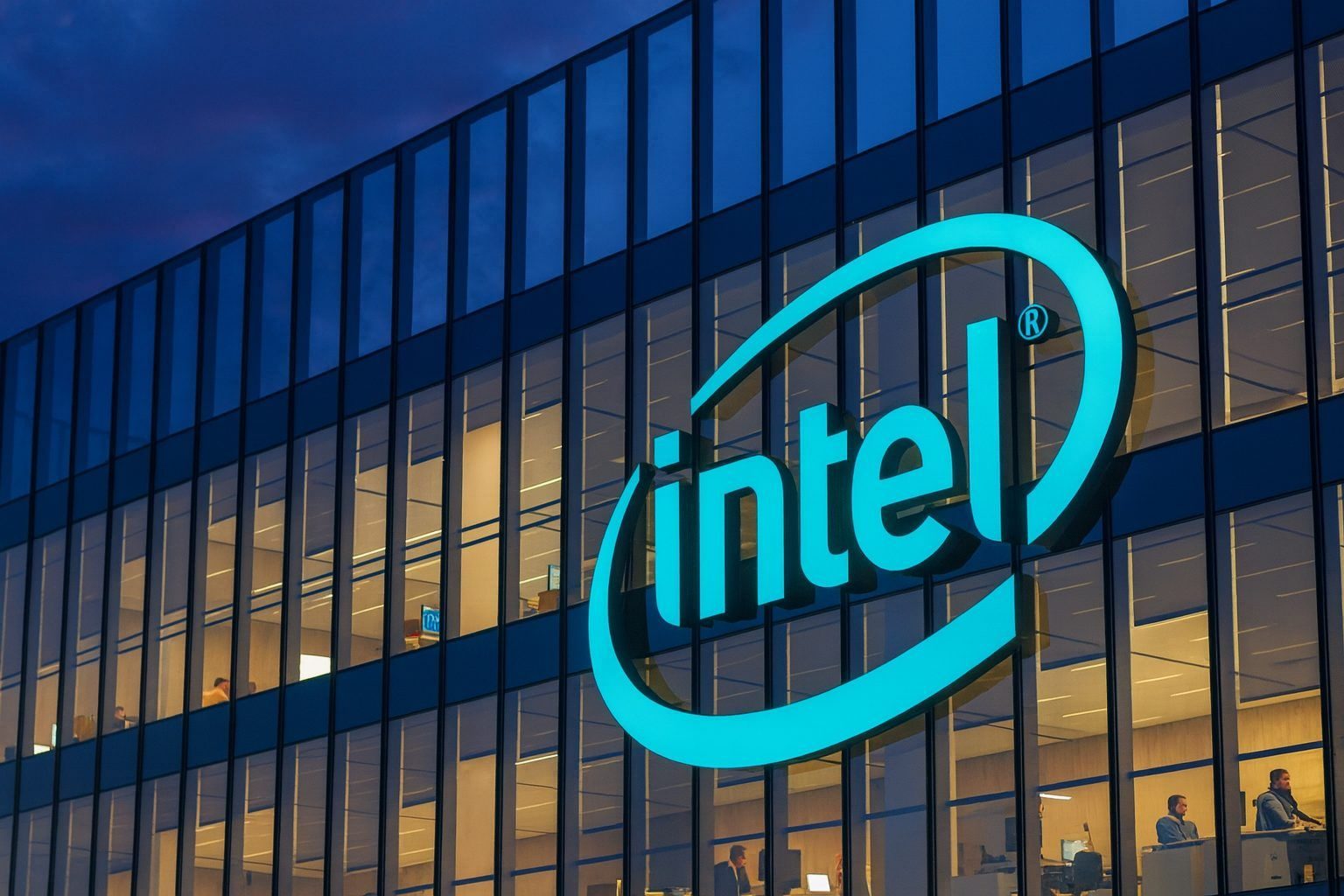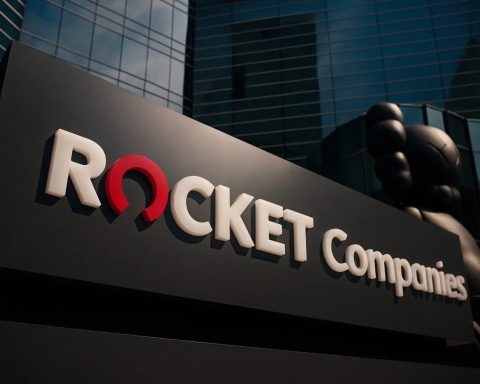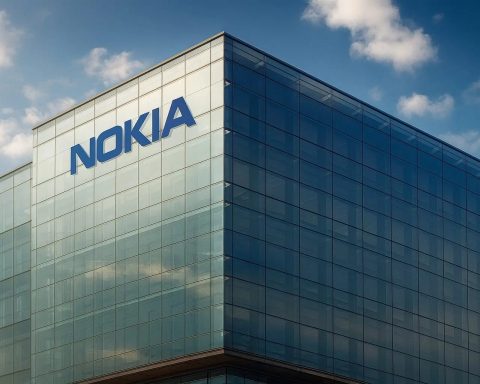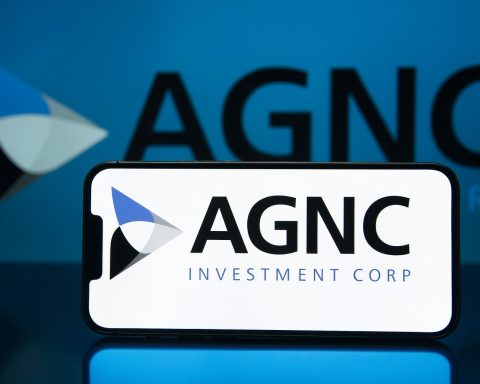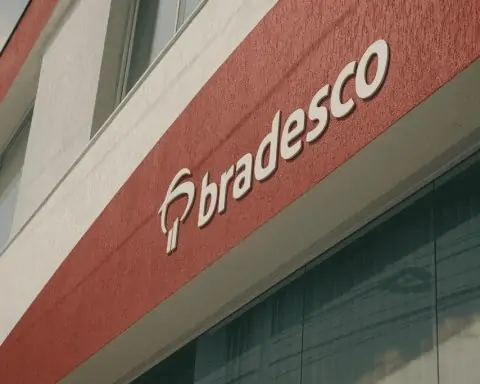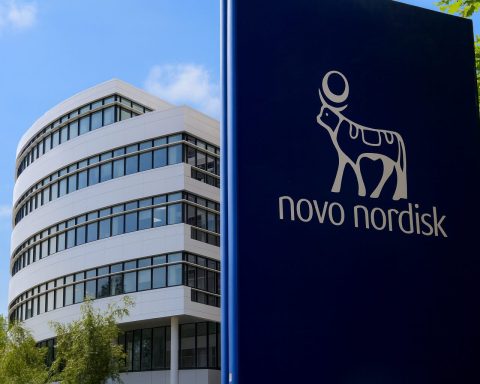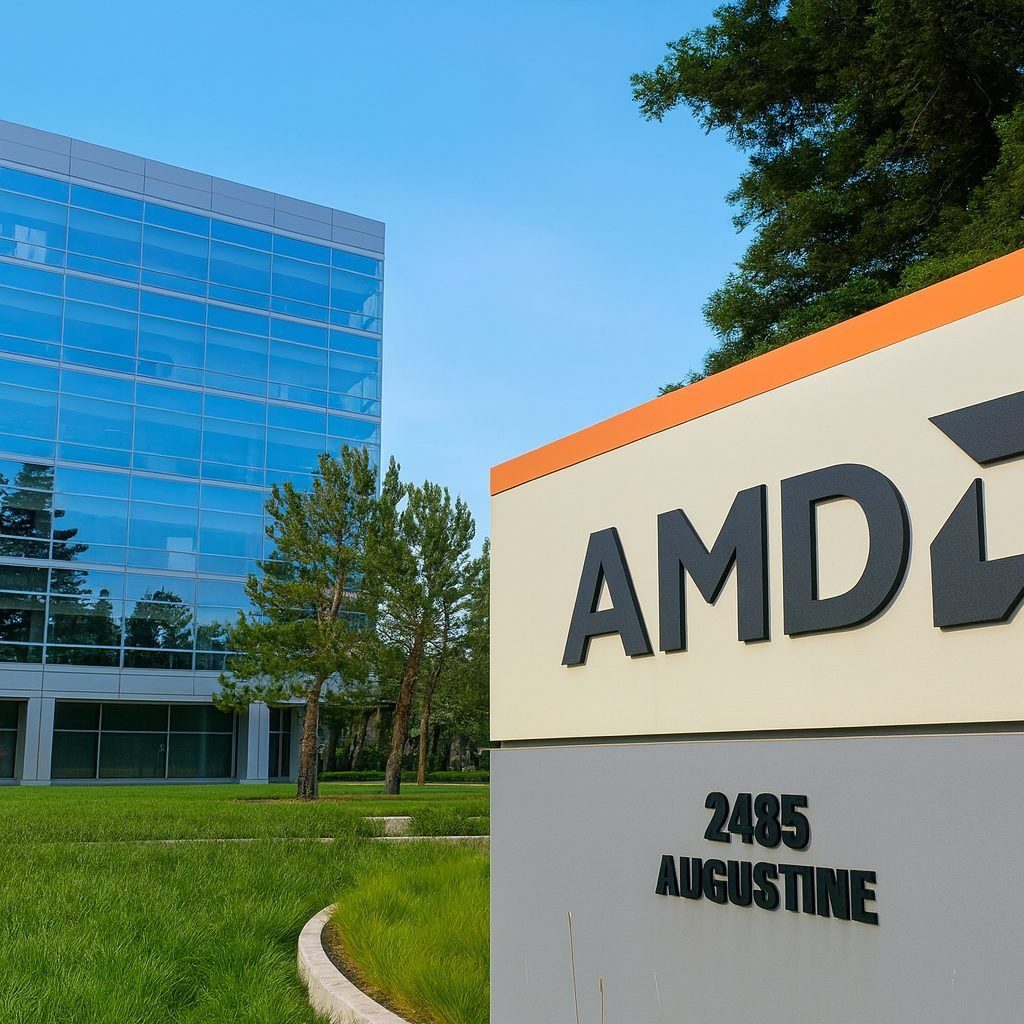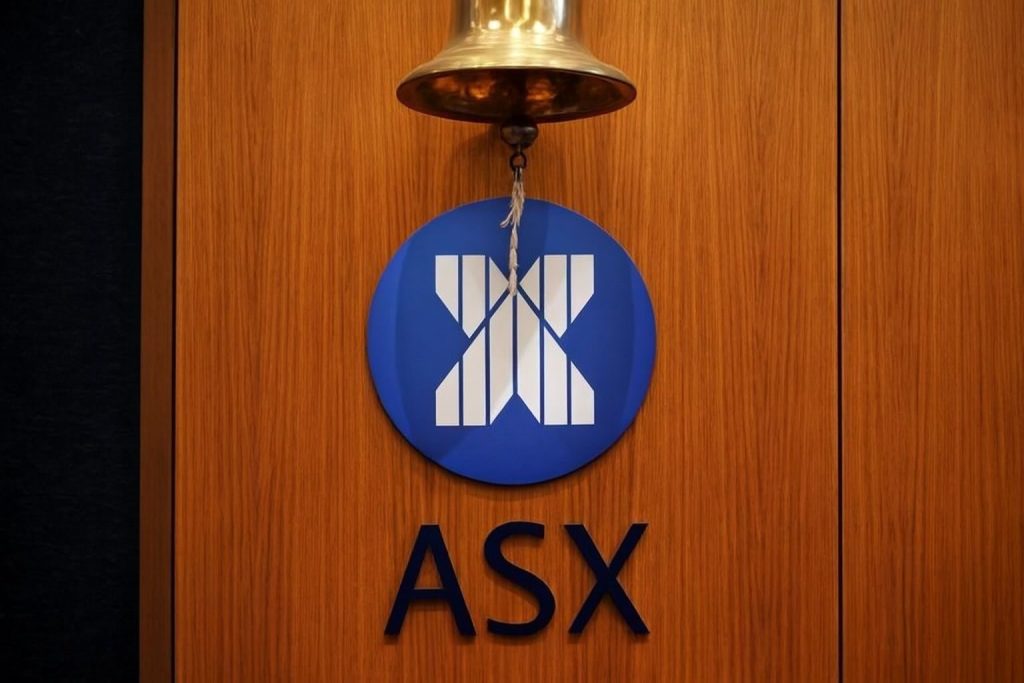Intel (NASDAQ: INTC) is trading slightly lower on Tuesday after a powerful two-day rally, as investors digest a flood of new information: a Q3 earnings surprise, a historic U.S. government equity stake, multibillion‑dollar investments from Nvidia and SoftBank, and fresh details on Intel’s AI PC and foundry roadmap. [1]
Below is a detailed look at where Intel stock stands today, November 25, 2025, and what’s driving sentiment around INTC right now.
Intel stock price today: modest pullback after a strong run
As of early U.S. afternoon trading on Tuesday, Intel shares are changing hands around the mid‑$35s, down roughly 0.8% from Monday’s close near $35.79. Monday’s session saw Intel jump about 3.7%, marking a second straight day of gains and outperforming many chip peers. [2]
Key price and volatility metrics:
- Previous close (Mon, Nov 24, 2025): $35.79 [3]
- Intraday range so far (Tue, Nov 25): roughly $34.7–$35.9 [4]
- 52‑week range: about $17.67 (low) to $42.48 (high) [5]
- 1‑year performance: up roughly 45–50% over the past 12 months, depending on data provider [6]
- 1‑month performance: still down around 6–7% despite the recent bounce [7]
- Beta: about 1.3–1.4, meaning Intel typically moves more than the broader market on volatile days [8]
At today’s levels, Intel trades about 16% below its late‑October 52‑week high, but is still more than double its 52‑week low, underscoring how dramatic the 2025 recovery has been. [9]
Short‑term traders are also watching technical levels:
- Several technical research notes highlight support in the low‑$33 area, where the stock recently rebounded after a brief pullback. [10]
- The mid‑$36 to low‑$37 zone has acted as near‑term resistance in November, with failed attempts to break higher earlier in the month. [11]
Earnings comeback: Q3 2025 results changed the narrative
Intel’s recent price action is anchored in its third‑quarter 2025 earnings, released October 23, which marked a return to profitability and a sharp improvement in margins.
Headline Q3 2025 numbers
According to Intel’s own filings, for Q3 2025 the company reported: [12]
- Revenue: $13.7 billion, up 3% year over year
- GAAP gross margin: 38.2% (vs. 15.0% a year ago)
- Non‑GAAP gross margin: 40.0% (vs. 18.0% a year ago)
- GAAP net income: $4.1 billion, vs. a $16.6 billion loss in Q3 2024
- GAAP EPS: $0.90, vs. a loss of $3.88 per share
- Non‑GAAP EPS: $0.23, vs. a loss of $0.46
Operating expenses also moved in the right direction: Intel’s combined R&D and marketing/general/admin spending fell roughly 17–20% year over year, reflecting aggressive cost‑cutting under CEO Lip‑Bu Tan, who took the top job in March 2025. [13]
Segment performance highlights: [14]
- Client Computing (PCs): $8.5B revenue, up 5% year over year
- Data Center & AI (DCAI): $4.1B, down ~1% year over year
- Intel Foundry: $4.2B, down ~2%, underscoring ongoing challenges in the contract manufacturing business
Industry coverage framed this as Intel’s first solid step out of its 2024 slump, when the company posted its first annual loss in nearly 40 years. Analysts and tech media noted that Q3 2025 was Intel’s fourth consecutive quarter of improved execution, but warned that much of the profit improvement was tied to one‑time items and external funding, not just organic demand. [15]
Q4 guidance: cautious optimism
For Q4 2025, Intel guided investors to: [16]
- Revenue: $12.8–$13.8 billion
- GAAP EPS: around –$0.14
- Non‑GAAP EPS: around $0.08
The negative GAAP EPS outlook reflects expected accounting impacts from the Altera divestiture and ongoing restructuring, even as the company continues to talk up improving underlying demand and tighter cost controls.
Massive capital inflows: U.S. government, Nvidia, and SoftBank
One of the biggest stories shaping INTC today isn’t just earnings — it’s who owns the stock now.
A 10% U.S. government stake at $20.47 per share
On August 22, 2025, Intel and the Trump administration announced a landmark deal:
- The U.S. government will invest $8.9 billion in Intel common stock, buying 433.3 million new shares at $20.47 each, equivalent to a 9.9% stake. [17]
- The funds come from previously awarded but unpaid CHIPS Act and Secure Enclave program grants, converting them into equity. [18]
- Washington will also receive a five‑year warrant to purchase another 5% of Intel’s shares at $20, exercisable only if Intel ever stops owning at least 51% of its foundry business. [19]
This deal makes the U.S. government one of Intel’s largest shareholders and is framed explicitly as “permanent capital” to back the company’s more than $100 billion U.S. manufacturing build‑out. [20]
With INTC trading in the mid‑$30s today, that government stake is deeply in the green, highlighting how much the stock has rallied since the deal was struck.
Nvidia: $5 billion equity stake and a strategic AI partnership
In September, Nvidia announced it would invest $5 billion in Intel stock at $23.28 per share, as part of a wide‑ranging partnership to co‑develop custom CPUs and AI‑focused platforms: [21]
- Intel will design x86 system‑on‑chips that integrate Nvidia RTX GPU chiplets for PCs.
- The companies will also collaborate on data center platforms, combining Intel CPUs with Nvidia’s AI accelerators via NVLink.
Analysts describe the move as a major vote of confidence from the AI leader that has often been Intel’s fiercest rival. However, Nvidia has emphasized it will continue to rely primarily on TSMC for manufacturing, so the partnership doesn’t fix Intel’s foundry issues overnight. [22]
SoftBank: $2 billion “lifeline” and strategic alignment
In August, SoftBank Group committed $2 billion to Intel stock at $23 per share, giving the Japanese conglomerate just under a 2% stake and making it one of Intel’s top ten shareholders. [23]
SoftBank founder Masayoshi Son has longstanding ties with Lip‑Bu Tan, and commentators see the stake as both:
- A symbolic endorsement of Intel’s turnaround, and
- A potential bridge to future AI/datacenter collaborations, given SoftBank’s massive investments in AI infrastructure and chip companies. [24]
How much cash did Intel actually get?
Intel’s CFO has described 2025 as a year of “strengthening the balance sheet.” In Q3 alone, Intel: [25]
- Received $5.7 billion from the U.S. government,
- Took in $2 billion from SoftBank, and
- Generated about $5.2 billion from selling stakes in Altera and Mobileye,
- While expecting Nvidia’s $5 billion investment to close by the end of Q4 2025.
This capital stack — government equity, strategic investors, and asset sales — is a key reason Wall Street is taking the turnaround more seriously, even as it worries about long‑term profitability.
Strategic reshaping: Altera, foundry bets and AI acquisitions
Altera: 51% sold, 49% retained
In April, Intel agreed to sell a 51% stake in its programmable chip unit, Altera, to Silver Lake (with Abu Dhabi’s MGX co‑investing), valuing the business at about $8.75 billion. [26]
Key details:
- The deal closed in September, and Intel now owns 49% of Altera, which is deconsolidated from Intel’s financials. [27]
- Silver Lake’s cash injection helped Intel cut debt and reduce its 2025 non‑GAAP operating expense target from $17.0 billion to $16.8 billion, with a goal of $16.0 billion in 2026. [28]
Selling majority control of Altera trims near‑term revenue and earnings, but it frees Intel to concentrate capital on its highest‑priority bets: leading‑edge manufacturing, AI CPUs, and its foundry push.
Foundry pivot: 18A now, 14A later — but customers still thin
Intel’s success or failure as a foundry will likely determine the long‑term outcome for INTC shareholders.
Recent developments:
- Intel says yields on its 18A process node — the technology underpinning its next‑gen chips — are steadily improving, and that 18A will underpin both internal products and external foundry customers. [29]
- At the same time, Intel has acknowledged that its foundry business does not yet have “significant external” customers for leading‑edge nodes, and has warned it may pause or discontinue development of future nodes (like 14A) if it cannot secure major anchor clients. [30]
That tension — improving technology, but a still‑thin customer list — is central to why analysts remain cautious even after Q3’s profit beat.
AI PC and Panther Lake: Intel’s bet on “AI‑first” client computing
On October 9, Intel unveiled Panther Lake, its first client processor family built on Intel 18A, marketed as the company’s first “AI PC” platform: [31]
- Panther Lake targets over 50% faster CPU performance and over 50% faster graphics versus the previous generation, along with up to 180 TOPS of total AI compute across CPU, GPU and NPU.
- It will enter high‑volume production at Fab 52 in Chandler, Arizona later this year, with broad availability of systems expected in early 2026.
- The announcement doubled as a showcase of Intel’s U.S. manufacturing resurgence, positioning 18A as “the most advanced node developed and manufactured in the United States.” [32]
Tech coverage has been cautiously optimistic: leaks and early tests suggest the first Panther Lake parts may only be incrementally faster than some of Intel’s current premium mobile CPUs, but the AI acceleration and U.S.‑made story are seen as key differentiators in a world increasingly focused on AI and supply‑chain security. [33]
AI M&A: talks to acquire SambaNova
In late October, reports surfaced that Intel is in early‑stage talks to acquire AI chip startup SambaNova Systems at a valuation below its prior $5 billion round. [34]
- SambaNova designs custom AI accelerators and already counts both Intel Capital and SoftBank’s Vision Fund as investors.
- A deal, if it happens, would deepen Intel’s AI portfolio and could give it a faster path back into the high‑end AI inference market currently dominated by Nvidia.
For now, the talks are preliminary, and there’s no guarantee an acquisition will close — but even the rumor underscores how aggressively Intel is leaning into AI as part of its turnaround.
Leadership and governance: new faces at the top
Alongside the financial and strategic moves, Intel is reshaping its leadership bench:
- Cindy Stoddard, a veteran IT leader and former Adobe executive, has been appointed Senior Vice President and Chief Information Officer, effective December 1, 2025. She will report directly to CEO Tan and lead Intel’s global IT organization as it modernizes its internal systems and data infrastructure. [35]
- Dr. Craig H. Barratt, former CEO of Barefoot Networks and ex‑SVP/GM of Intel’s Connectivity Group, joined Intel’s board of directors as an independent director in November 2025. His deep semiconductor and networking background is meant to bolster board‑level oversight of the turnaround. [36]
These appointments add to the perception that Intel is re‑tooling both management and governance to support Lip‑Bu Tan’s “engineering‑first” strategy.
What Wall Street and institutions are doing with INTC
Institutional flows
A new SEC filing highlighted by MarketBeat today shows Waterloo Capital L.P. taking a fresh position of 14,720 Intel shares, worth roughly $330,000 at the time of purchase. The same report notes that institutional investors collectively own about 65% of Intel’s float, with several asset managers increasing their holdings earlier in the year. [37]
While that single purchase is small in the context of a $170+ billion market cap, it fits into a broader pattern of steady institutional interest as the turnaround story has gathered steam.
Analyst ratings and price targets
According to MarketBeat’s aggregation of broker research: [38]
- Intel currently carries an average rating of “Reduce”, skewed toward Hold and Sell rather than Buy.
- The compiled consensus includes only a small minority of Buy ratings, with dozens of Hold and Sell recommendations.
- The average 12‑month price target in that dataset sits around $34–$35, slightly below today’s share price.
Other platforms show a more optimistic picture — Simply Wall St, for example, highlights an analyst consensus target near the high‑$30s, implying modest upside from current levels. But even there, commentary stresses execution risk in the foundry business and the heavy dependence on government and strategic partners to fund Intel’s ambitions. [39]
The bottom line from Wall Street: Intel’s stock has run hard, but the turnaround is still considered fragile. Bulls argue AI PCs, government backing and Nvidia/SoftBank partnerships justify a premium, while bears focus on foundry uncertainty, competitive pressure from AMD/Arm, and the risk that recent profits are not yet sustainable.
Market context: tech rally, rate‑cut hopes and Intel’s beta
Intel’s moves today come against the backdrop of a broader tech rally:
- On Monday, the S&P 500 gained about 1.3% and the Nasdaq jumped more than 2%, helped by strong moves in mega‑cap tech like Alphabet and Tesla as traders priced in higher odds of a Federal Reserve rate cut in December. [40]
- Futures were mixed heading into Tuesday as investors awaited economic data that could confirm or temper those rate‑cut expectations. [41]
With a beta above 1.3, Intel tends to amplify these macro swings — meaning that broader sentiment around AI, rates and geopolitics can move INTC even when company‑specific news is quiet.
Key issues for INTC investors to watch next
Whether you’re bullish, bearish, or on the fence about Intel stock today, the next few months are likely to revolve around a handful of themes:
- Execution on 18A and foundry customers
- AI PC uptake and competition with AMD/Arm
- Closing (and integrating) strategic deals
- Sustainability of margins and cash flow
- To what extent are recent margin gains repeatable once one‑off items — government funding, asset sales, accounting gains — roll off? [48]
- Can Intel keep R&D and operating expenses in check without jeopardizing its technology roadmap?
- Regulation, geopolitics and government influence
- The U.S. government’s nearly 10% stake and CHIPS‑related support underscore Intel’s strategic national importance, but they also bring regulatory scrutiny and political risk if policies or administrations change. [49]
Today’s takeaway on INTC
On November 25, 2025, Intel stock is pausing after a strong run, trading in the mid‑$30s after a two‑day bounce and still well below its recent 52‑week high. Under the hood, the story is complex:
- Positives: A return to profitability, improving margins, aggressive cost cuts, major external capital from the U.S. government, Nvidia and SoftBank, and a clearly articulated AI PC and foundry roadmap. [50]
- Negatives: Foundry still lacks big third‑party customers, AI GPU leadership remains with rivals, and much of the recent financial improvement is tied to extraordinary items and outside capital rather than purely organic cash generation. [51]
As of today, Wall Street broadly sees Intel as a high‑beta turnaround story: too important to ignore, but still carrying significant execution and competitive risk.
For investors, the key questions are less about where the share price sits this afternoon and more about whether you believe Intel can:
- Turn its government and strategic backing into durable competitive advantage,
- Secure enough foundry customers to justify its massive capex, and
- Deliver on its promise to be a leader in AI‑first PCs and data‑center compute over the next several years.
Disclaimer: This article is for informational and educational purposes only and does not constitute financial, investment, or trading advice. Always do your own research or consult a licensed financial professional before making investment decisions.
References
1. www.intc.com, 2. www.marketwatch.com, 3. stockinvest.us, 4. www.investing.com, 5. simplywall.st, 6. www.investing.com, 7. simplywall.st, 8. simplywall.st, 9. simplywall.st, 10. www.fxleaders.com, 11. www.investing.com, 12. www.intc.com, 13. www.intc.com, 14. www.intc.com, 15. www.tomshardware.com, 16. www.intc.com, 17. www.intc.com, 18. www.intc.com, 19. www.intc.com, 20. www.intc.com, 21. nvidianews.nvidia.com, 22. www.reuters.com, 23. www.intc.com, 24. www.reuters.com, 25. www.manufacturingdive.com, 26. www.reuters.com, 27. www.intc.com, 28. www.intc.com, 29. overclock3d.net, 30. www.crn.com, 31. www.intc.com, 32. newsroom.intel.com, 33. www.tomshardware.com, 34. www.reuters.com, 35. newsroom.intel.com, 36. www.intc.com, 37. www.marketbeat.com, 38. www.marketbeat.com, 39. simplywall.st, 40. www.reuters.com, 41. www.barrons.com, 42. overclock3d.net, 43. www.crn.com, 44. www.intc.com, 45. www.tradingview.com, 46. www.intc.com, 47. www.reuters.com, 48. www.intc.com, 49. www.intc.com, 50. www.intc.com, 51. www.crn.com
